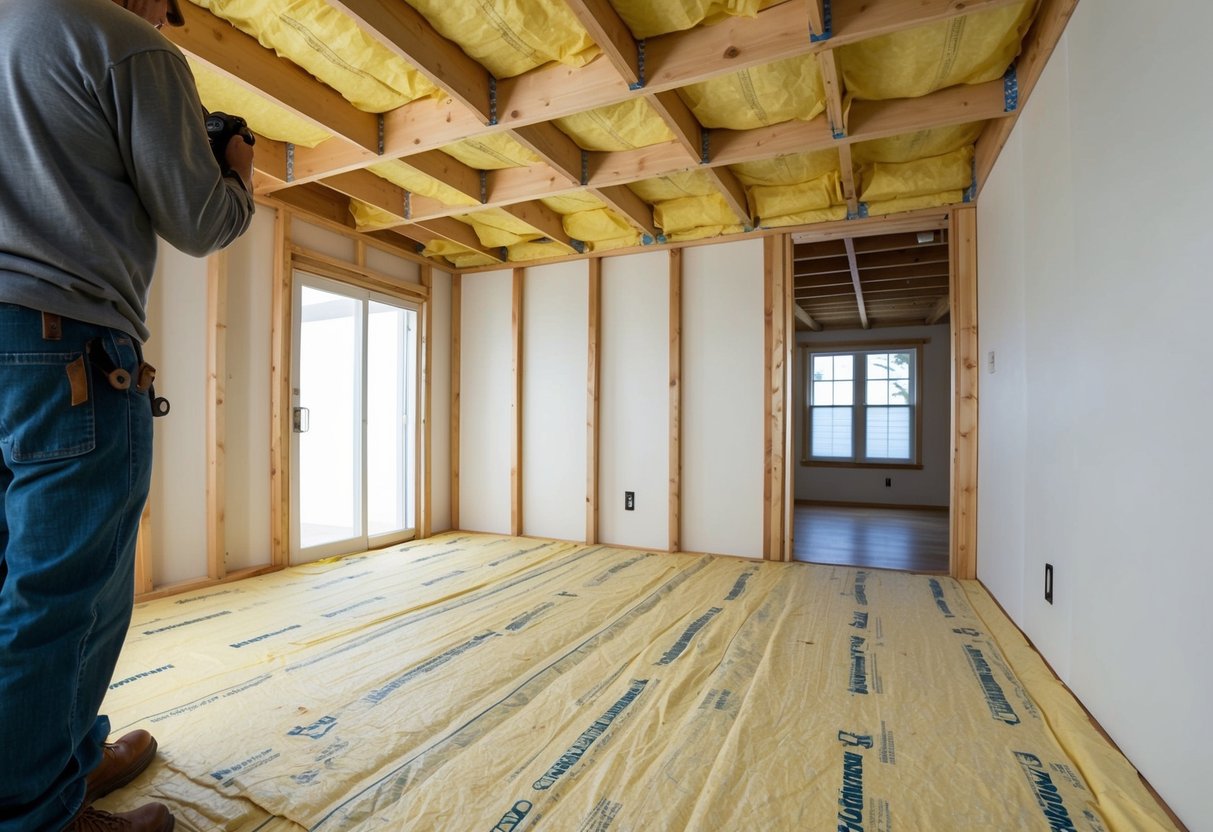Ultimate Guide to DIY Insulation: Improve Energy Efficiency and Comfort
Installing Blown-In or Batt Insulation
Deciding between blown-in insulation and fiberglass batts depends largely on the attic’s layout and ease of access. Blown-in insulation, made from materials like cellulose, is ideal for filling small crevices or layered on existing insulation to improve efficiency.
Fiberglass batts come in pre-cut sections, making them a simple choice for attics with standard joist spacing. Each type has its benefits and is chosen based on the specific requirements of the attic space. Installation should be handled carefully to prevent any gaps that could reduce thermal resistance.
Attic Ventilation Considerations
Attic ventilation is necessary to prevent moisture build-up and heat trapment, especially during hot months. Proper ventilation helps extend the lifespan of the roof and keeps energy costs down. A well-ventilated attic will improve air circulation, which is beneficial year-round.
Assessing existing ventilation systems, such as ridge vents or soffit vents, ensures they are not blocked and are functioning efficiently. In some cases, installing additional vents might be necessary. Adequate ventilation complements the insulation, ensuring a balance between temperature regulation and structural integrity.
Walls and Floors: Securing the Building Envelope

Securing the building envelope requires attention to walls and floors to maximize energy efficiency and comfort. Proper insulation levels and sealing are crucial, particularly in areas like the basement. Effective use of batt and spray foam insulation can offer significant improvements.
Insulating Existing Walls
Ensuring existing walls have adequate insulation is critical for maintaining energy efficiency. Walls that lack sufficient insulation can lead to significant heat loss or gain, impacting indoor comfort.
Homeowners can choose between retrofitting batt insulation or employing spray foam techniques for more thorough coverage. Identifying air leaks and sealing them enhances insulation performance. Attic accesses, electrical penetrations, and other openings should be checked and sealed meticulously. Depending on the existing structure, different insulation strategies may be required. These should be tailored to the specific needs of the building.
Batt and Spray Foam Applications
Choosing the right insulation material is essential for improving home energy efficiency. Batt insulation is known for being cost-effective and relatively easy to install. It is available in various materials like fiberglass and mineral wool, offering versatility.
Spray foam, on the other hand, is efficient at sealing small gaps and cracks. It expands to fill spaces, providing an air-tight barrier that batt insulation can’t achieve alone. For optimal results, a combination of batt and spray foam might be used in various parts of the home. This strategic approach can significantly enhance a building’s thermal performance.
Insulating Floors and Basements
Floors and basements are crucial areas where insulation can make a significant difference. Ground-level floors without proper insulation are prone to cold infiltration, which can make the living spaces above uncomfortable.
Basement insulation is especially important since it affects the entire house’s temperature regulation. Installing rigid foam panels or spray foam along the basement walls and ceiling can create a continuous thermal barrier. Addressing moisture issues and sealing any foundation cracks will further improve insulation effectiveness. These measures combined can lead to improved energy savings and a more comfortable home environment.
Insulating for Seasonal Changes
Proper insulation is essential for managing heating and cooling costs throughout the year. Insulating adequately not only provides comfort but also prevents issues like ice dams, which can lead to structural damage.
Protection Against Winter Cold
Winter months demand insulation that effectively traps heat. Homeowners can achieve this by upgrading attic insulation, as heat loss through the roof is significant. Materials like fiberglass, cellulose, and foam are commonly used for this purpose. Sealing gaps in windows and doors with weatherstripping or caulking further reduces heat loss.
Using insulated window treatments, such as thermal curtains, can also prevent cold drafts. Reinforcing walls, basements, and crawl spaces with appropriate insulation materials ensures that the warmth is retained, leading to noticeable energy savings.



